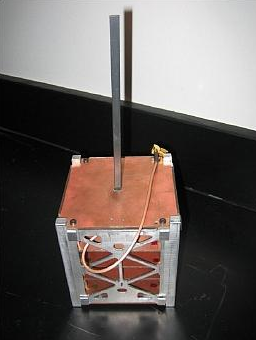Hermes-2

Hermes-2 is the re-flight of the Hermes CubeSat Project that originally launched a 1U CubeSat as a secondary payload on a Taurus-XL rocket in 2011 launching NASA’s Glory Spacecraft. The launch failed and all payloads were lost.
The project is being operated by the Colorado Space Grant Consortium with the objective of improving CubeSat Communications by demonstrating a high data-rate S-Band communications system. Another objective is the design of a CubeSat Bus that could be used in future missions with different scientific and engineering payloads.
The 1U CubeSat consists of an aluminum exoskeleton structure and uses an internal stack of five printed boards. Power is generated by body-mounted solar panels and distributed by a dedicated system that supplies output voltages of 3.3, 5.0 and 7.4 V. Attitude Control is provided by a passive system consisting of five permanent magnets while attitude determination is accomplished by a three-axis radiometer provided by Honeywell. The command and Data Handling System of the satellite is built around a PIC24H main processing unit.
The main payload of the Hermes-2 satellite is a Microhard MHX-2400 S-band modem that can support data rates of up to 50kbit/s using the 2.4 GHz frequency. The payload uses a HSCOM monopole antenna. Nominal data downlink and command uplink is done via UHF using a commercial off-the-shelf radio and antenna to achieve data rates of 1200bit/s.
